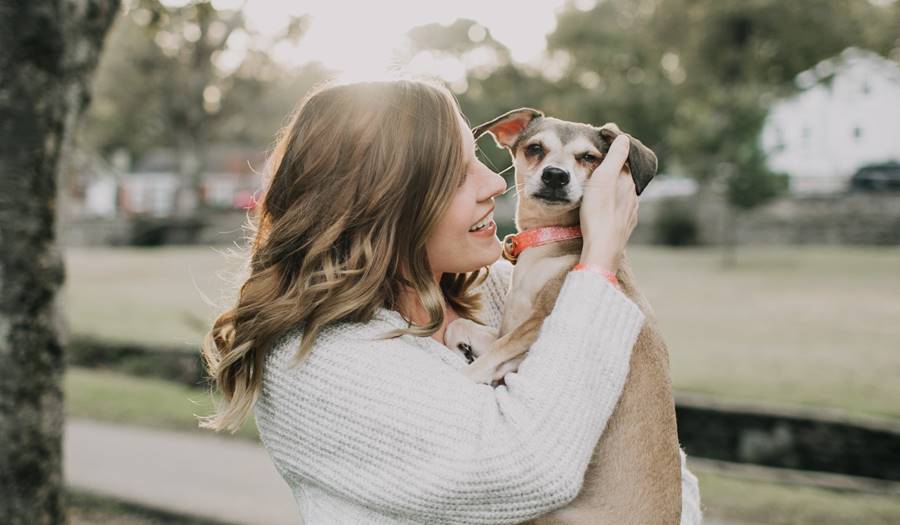
Financial Tips For Owning A Pet
8/11/2020
With the recent COVID-19 restrictions in place, many people found comfort in bringing a new pet into their life. However, owning a pet comes with a plethora of responsibilities, including both time and financial ramifications.
The COVID-19 pandemic means that more people are staying and working from home. From mid-March to mid-April of 2020 the Google search for “adopt a pet” surged by 335% in volume. Needing to go to the office for a huge portion of your day is a big reason why people don't own pets. They feel they aren't home enough during the day and it wouldn't be fair for the pet. Now, with many people planning to work from home indefinitely and therefore home more, this is the perfect time to adopt a pet. Although the problem of being home more for a pet is solved, there's still another huge concern when owning a pet… the financial impact. Here's what to expect financially when you bring your new furry family member home.
Listen to our Podcast:
Save up for a year's worth of pet expenses
Saving up for your pet is the equivalent to having an emergency fund saved for your family. Just as with humans, there can also be unexpected events that come up for a pet. Depending on which pet you select, the first-year costs could run you from $200-$2,000 or more. You'll need money for initial expenses, such as a collar, dog bowl, immunizations and bedding, for example. Then there will be annual costs such as grooming, food, registration, and the like. Having a year's worth of expenses saved, just as you would with a regular emergency fund, will give you peace of mind. Should you lose your job, your pet will still need to eat, be groomed and have basic medical needs met. This is where saving a year's worth of expenses comes in handy. Having a pet emergency fund prepared before you obtain a pet is a necessary security blanket to have.
Read More: Why Everyone Needs And Emergency Fund And How To Start One
Be prepared for medical expenses
If you don't have an emergency fund for your pet, you might want to consider pet insurance. The average annual premium for a pet accident-and-illness plan is $529 according to schwab.com. That's about $44 per month. As more people are opting to have pets instead of kids, pet insurance has become a popular employee benefit. Be sure to check with your employer about availability and discounts before selecting an insurance policy. There is a wide variety of different pet insurance, so you'll want to shop around before you select. If you're paying less per month, you may only get covered for a serious injury, such as if your pet is hit by a car. If you're paying more per month, you're possibly covered for more, such as annual check-ups and even dental visits for your pet. As always, read the contract.
Without insurance, out of pocket costs can vary from state to state. If you opt out of insurance, expect to pay about $45-$55 per physical exam and vaccines can cost from $15-$28 per shot. Now if this is the only yearly vet expense you expect to pay for your pet, then that might not be considered a huge financial burden. If you want to add additional tests and services, such as dental and allergy testing, that's going to costs you upwards of $250. These services are not mandatory for your pet, but a pet can also experience an unexpected emergency just like humans.
Read More: Should You Say ‘No' To That Doggy In The Window This Holiday Season?
An unexpected emergency can cost, on average $400 for dogs, and $200 for cats. If you can build and maintain an emergency fund for your pet, you might opt out of getting pet insurance. Not everyone can save for an emergency fund for their pet and therefore feel more comfortable with pet insurance. Either way, you need to be prepared financially for a visit to the vet.
Save money on monthly pet expenses
When creating your monthly budget, include a category for your pet's monthly needs. You can save money on these monthly pet expenses by doing a little research before you buy. Save big on pet food by finding coupons for your preferred brand or even a BOGO option. If you can't find either of these, stock up when food goes on sale. Keep in mind portion control when feeding your dog. They are notorious over-eaters, it will cost you money in excess food, and potentially vet bills if they become obese. Don't overfeed your pet and strive to keep them active. Make sure to go on walks or buy them toys to keep them busy.
In today's consumer driven world, there are so many options to pamper your pet. Although you'll want to spoil your pet, there are some things you just don't need to spend money on. For example, don't fall victim to purchasing expensive waste disposal bags to use when your dog needs to use the restroom on a walk. Save money by bringing a couple of grocery bags with you. Using these bags won't cost you anything.
Another way to save is by learning to groom your dog yourself. Make the initial investment of buying the tools you'll need, then take care of your pet yourself, instead of paying a groomer to do so. You can find free grooming tutorials online that are easy to follow.
Read More: Use A SMART Goal To Budget For Your Next Big Purchase
Lastly, shop around for any medications your dog may need. Your vet might recommend a costly name brand medication. If you shop around, you might find the same exact but generic medication for a much lower price.
What happens when you need to go back to the office full-time?
Many people have invested in new pets during COVID-19 because they aren't frequenting their offices every day, going out on the weekends, nor taking vacations. There will be a time though, when your life starts to get back to normal and you aren't spending as much time at home as you were when you first got your furry friend.
Doggy daycare has become somewhat commonplace. With Americans working long days at the office, you may consider sending your dog to a doggy daycare a few times a week while you're at the office, to break up the monotony of their day.
If you don't want to opt for the cost of a full on doggy daycare, a dog walker can be a more economical option. Regardless of what you decide, this will be an added monthly cost to the pet category in your budget.
Read More: Teaching Your Child Financial Literacy
What if you go on vacation?
Even if you want to just go away for a night or two, you're going to have to find care for your pet. You could be lucky enough to have a friend or family member care for your pet, but if not you'll have to look into hiring a pet sitter or boarding your pet. You're looking to spend at least $45 a day for your pet to be boarded. If you're planning for a trip, make sure to keep dog boarding in your pet budget leading up to your trip.
Bringing a pet into your family can be an exciting time. Just like planning for having a child, you want to make sure you're financially able to support your new family member. If you've never had a pet before, do your research to figure out what pet is for your lifestyle. If you're looking to adopt, check out the animals at the rescue first. Meet and greet with a few and talk it over as a family to decide which one would be the right fit for your family. If you've recently taken in a pet during COVID-19, start creating a pet budget now for when things go back to normal. Finances aside, having a pet can help complete your family. Enjoy your new furry friend and give him or her a lot of love!

Katherine Fatta is the Social Media and Content Specialist at Navicore Solutions. She creates fun and informative social media posts that engage the public. She’s also the host of Navicore’s podcast, ‘Millennial Debt Domination.’ You can listen to our podcast here.
You can follow Navicore Solutions on Facebook, Twitter, LinkedIn and Pinterest. We’d love to connect with you.